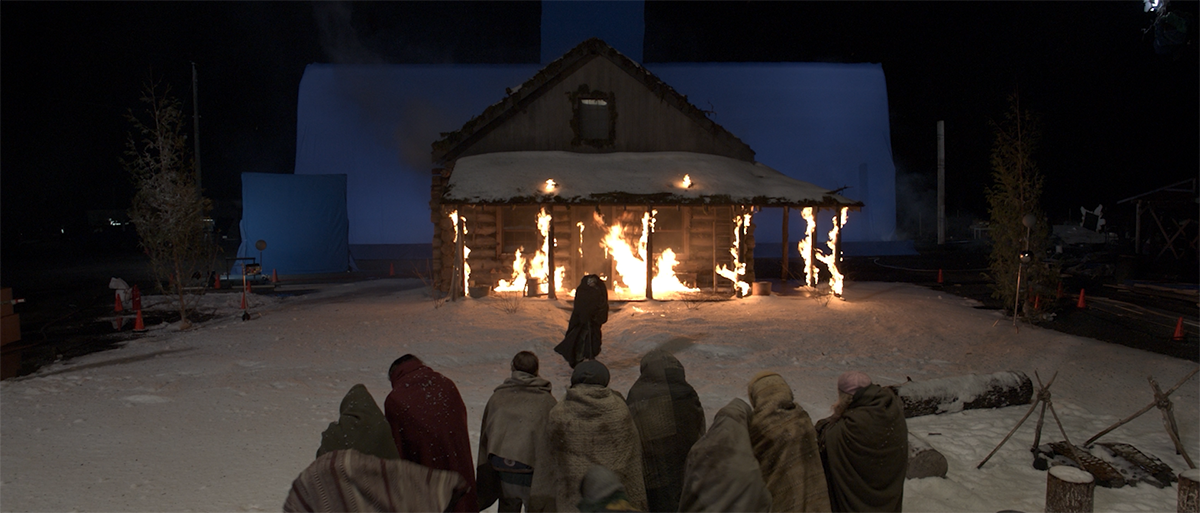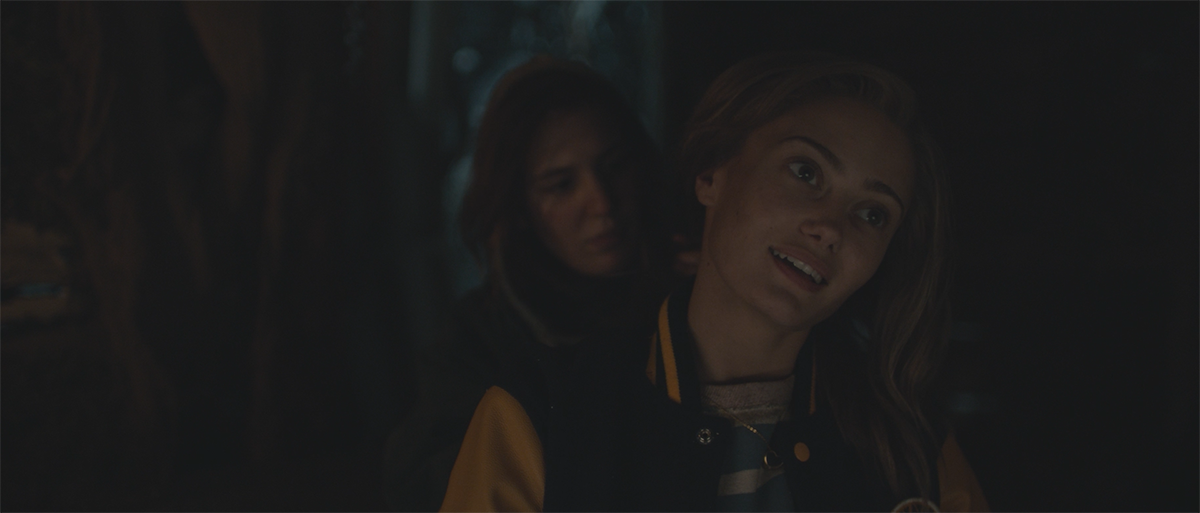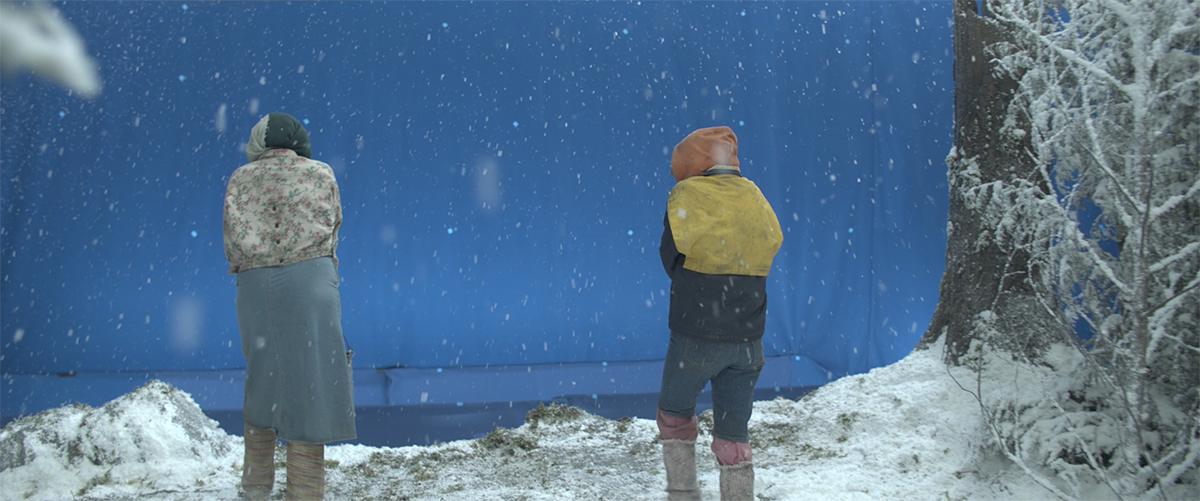The second season of Showtime's Yellowjackets took viewers deeper into the mystery of what happened to a high school girls' soccer time in the 1990s after their plane crashes in the Canadian wilderness, leaving them stranded for over a year and how what happened in that wilderness has impacted them in the present day. Specifically, Season 2 saw some dark turns, particularly in the 1990s timeline with the starving survivors resorting to cannibalism and then, in the season finale, sees their only source of shelter -- the cabin -- burn to the ground.
To bring these stunning moments -- as well as other scenes and sequences -- to life in the hit series, Yellowjackets uses a mix of both practical effects and digital effects. The two types of effects work together to bring the harsh realities of being stranded in the woods in the winter to life in a way that is just as unsettling as some of the show's more supernatural-tinged storylines. ComicBook.com recently sat down with FuseFX VFX supervisor Marshall Krasser who worked on Season 2 of the series to talk about how they helped augment the practical effects to bring the sometimes horrifying world of Yellowjackets to life, including the stunning cannibalism scene in the season's second episode as well as the shocking cabin fire in the season finale.
Nicole Drum, ComicBook.com: There's always a few things that strike me when I prepare for interviews, but I think a lot of casual movie and television audiences, when they think of VFX, they fall into a couple of camps. They either think of more of those fantastical effects, like you see in superhero movies or they don't understand the distinction between practical effects and what VFX does and can do and how they work together, especially with stuff like Yellowjackets. Give me a bird's eye view of what you do for Yellowjackets.
Marshall Krasser, FuseFX: I worked with Kent O'Connor. Kent was the show visual effects supervisor. He was the one working with the show runners and directors and editors and he would be on set. In this particular case, basically, we were given a chunk of work and said, "Okay. Yeah." We had a script and we have to look at the script, break down the script, figure out what's needed, assist Kent with that type of stuff and put it together. As far as the difference between special effects and visual effects, special effects is basically anything that is caught in camera on set on the day, or sometimes they'll do an element shoot separately, whereas us, we're all in post-production. We deal with afterwards, if they need to, let's just say, add a dinosaur, that's where we come in. We would help add the dinosaur in, and that being said, though, the visual effects works in conjunction with the special effects supervisor and make a determination where it makes the most sense. Sometimes, a stunt or something is too dangerous, so you can't put a person at risk. That's where visual effects comes in and assists.
I myself am a fan of getting as much in camera as we can. Real is always good and we're just there to augment, which is some of the stuff that we did do in Yellowjackets, specifically with the charred body feast. Special effects had, basically, a body, a mannequin there that they had treated, so that they had done makeup effects on top of that type of stuff. When you get it in camera and get it in post, sometimes it doesn't get everything across that you want to. In that case, they called on us to come in and basically make it a little bit more appetizing.
I was going to say, that was actually one of my questions. I hate myself for saying this, but it actually looked like it looked good. That sounds terrible to say, but I knew logically speaking, I know that's obviously a prop. I know that there's makeup involved in that. I know that, but that only takes you so far and as someone who knows her roasted meats, I know had to be a little extra that made that look weirdly delicious.
On those, in that particular case, what they were trying to convey was initially the actors smell it, so smell starts whetting their appetite because they're very hungry. Earlier in the scene, or one of the sequences, there was a hanging bear carcass that actually had too much meat on it. We had to go in and remove some of that, so the hanging carcass was more bones. The idea is that you understand as a viewer that they're running out of food. There's not much left. They're getting very hungry. When it comes out there, the smell comes in and then they see this succulent thing on the barbecue thing.
What we guided to for that was we first went out and looked at Thanksgiving turkeys, roasted turkeys, as the skin looked. Then, we were doing further research because actually pig flesh is not far from human flesh. We ended up a lot of that referencing roasted pigs and using that look and that succulent, that juicy feeling. We could basically augment what they've done on set just to make it, like I said, a little bit more appetizing, and I think help the viewers understand a little bit more how could you do cannibalism? But if you're very hungry, and like I said, something looks really good and it smells really good, at a certain point your primal instinct takes over.
Yeah, absolutely, when it looks like that, and if you have a frame of reference for what roasted meat looks like, it's hard to battle that in your brain. But I've got to ask from a professional, how weird was it, making human look good. That's got to be the trippiest thing.
Well, it is a thing. One thing that people in the visual effects industry and supervisors like myself and other people say, just we hope that nobody ever looks in our search engine history because we Google some very weird stuff. In a situation like this, yes, charred humans, burnt humans. Yes, you do look at that and as we're doing this, we always throw on the disclaimer for the more squeamish, this is at least PG 13 or more. Some people get very, very squeamish with some of the stuff. We try not to put those people on the shots ... with visual effects, especially Yellowjackets, it's supposed to be seamless. You're not really supposed to think about the visual effects of it.
Pretty much all of the flying over in the mountains and the stuff, we augmented that with the snowstorms. That's all been digital enhanced with snow. Sometimes it was made a little bit more snowy in visual effects, and especially the cabin. The cabin was a set piece in a stage, so it had a few trees around it and then had a blue screen in behind it. We basically replaced the blue screen, put the forest in there, added a lot more snow and falling snow. Sometimes when they were drifted into the cabin, the drifts going up on the side of the cabin, and, of course, the big kind of finale with the burning of the cabin.

Again, they did burn the set piece, but they could only go so far and they pulled back as much as they can, but then, again, we took over the camera. There, again, Kent was really good about getting us elements. He took a drone out into the snowiness of British Columbia and lined it up, and basically flew a few passes, and luckily, we got one that tied in well with the pullback and come up. At the end sequence there, the sky was augmented and the smoke plume and stuff like that, but for the most part, what you're seeing there is, as they say on the license plate, beautiful British Columbia from a distance, even though we're supposed to be someplace else in Canada, but it's the same type of idea.
We did a lot of the environments. When you're looking down the cliff, we had to make the cliff extension down or the side view when I think they're throwing the poo bucket over the side. There was just a little bit of them in the right-hand corner. Everything else, then, was done with our digital map painting and reference photography and snow and everything else added in that way.
That's impressive, because so much of what you're mentioning... Again, logically, I know some of it has to be added because obviously you're not putting these actors in the middle of a super frigid forest like that because that's just uninhabitable. The Canadian wilderness is cold business. I can't see anybody being out there filming in that. Logically I know they're not out there being blue lipped and frozen. That's makeup, that's stuff added after, maybe. I'm sure the breath was probably even partially added, to an extent.
Pretty much all the breath was added for the most part, unless they were actually out on location. They did shoot some stuff on locations around BC, but that was the one thing. We did a lot of breadth additions to that, and it took some time to get it. I had initially done breaths years ago on the movie RENT. The movie rent, they basically had filmed in San Francisco, but they had filmed it in a sound stage and it was really hot and it was supposed to be New York and cold and winter. We had to add a lot of breaths. You come in and figure out ways to do that.
A good way to do it is how do you time your breaths? Where do you need it? I came up with the idea, if you put your hand over your mouth as you talk, you'll find out there's certain words that no breath comes out. Other words you feel like, that word, that one. You feel more of the breath power, and it is just an interesting thing because you don't think about it. You just think that when you're talking, you're exhaling, but it doesn't happen that way. That type of thing was dealt with.

We also did some work on an ear patch with the future barbecue queen, and the ear came off. Her ear was there, so we had to remove her ear and then put the broken piece ear in there and augment that type of stuff. We, ourselves, FuseFX did not work on the moose.
When they're tracking him, we see the moose tracks, and you pan around and look at that. They had tried to do something practically, but it wasn't real snow that it was going in, too quiet, and it just did not read like moose prints. I myself now live in BC and actually live in the interior of BC. I have some remote property and went up. I know I have moose on my property, and then driving around was able to find some actual moose prints to photograph as reference.
We used that as a reference on what the moose prints would actually look like because it's in snow. You can make something up, but like I said, there again, if you can find real world references it's what you really should do. But there's other little things, like when Christina Ricci realizes that the door had been broken in that she was staying in. She goes up to look at the doorframe and they had painted it a different color, but it didn't show up quite enough once they did their digital intermediate color climbing work. What we ended up doing was going in and painting that area they had painted to make it a little bit more evident that it had been freshly redone. Stuff like that, people would never guess, would never catch that.

There was also when the fork got stuck into the hand. They had a prop fork that they stick in and they had some practical blood, but we did augment it with some splashes and had more blood coming down. Also, the young girl's face. It was normal and suddenly all got grotesque and stuff, that was another thing that we worked on. Yeah, a wide variety of stuff, but it was great working with Kent and his team there, because it was also with the snow pyre stuff when we come flying in up over it and then there's a thing of snow that falls down. They needed more snow coverage, so we had to do digital snow on top of that to augment what they had because they couldn't get enough weight on it. If they, got too much weight, the branch would've fallen down. Plus, what was there we had to change because it looked like it was setting on a piece of cardboard or something. There's a lot of those seamless little effects that we were involved with.
Is there any fact or detail that was particularly challenging that you feel like... They're all probably some level of challenge, but one that was really difficult to get that you're happy with how it came out?
Yeah, I think, believe it or not, even though it's simple, it's getting that ear tracked to the head was just really, really difficult because just the movement and the recreation that had to happen on that. It's one of those things that the way it was initially planned to be shot got changed, just before they started shooting it. Yeah, just because we didn't have specific little track markers to go with, so you had to look for freckles or look for any other skin imperfections to try to track. That one, like I said, was particularly crazy.
Every shot, for the most part, always has a certain level of challenge, which is what makes the job still interesting, exciting because it's a whole new set of problems. Problem solving is what you have to do. It's just a matter of looking at everything and trying to solve the problems, but that's why we got a great team. For the end cabin stuff, well, we brought in Richard Greenwood to do additional VFX supervision on that one because he had done those type of work before. He focused on that, and he continued to work with Tyler Kehl. He was our visual effects producer and they kept things rolling through on that while I was working on seeing on other episodes and other aspects of the show. It just goes on.
We had a really good, like I said, rapport with Kent and then Lynn Whitlock was the official effects editor. We communicated with her a lot. Basically, it was a lot of back and forth and we would run ideas off them or they would say, "Hey, what do you think about this? How do you think we could solve it?" Yeah, I think we're there to basically solve problems and give solutions and help tell the story.
This interview has been lightly edited for length and clarity.
{replyCount}commentsfrom Comicbook.com https://ift.tt/NzPjdg7



0 Comments